Abstract
1 Apomorphine and pilocarpine each produced dose-dependent hypothermic effects in mice. However, the dose-response curve for pilocarpine was steeper than that for apomorphine.
2 Bilateral lesions of the caudate nucleus produced a permanent decrease in sensitivity to apomorphine but had no effect on sensitivity to pilocarpine.
3 Apomorphine and pilocarpine had synergistic effects; i.e. the hypothermic effect was greater following a combination of the drugs than following either drug alone.
4 The effect of apomorphine was antagonized by either haloperidol or scopolamine; only scopolamine antagonized the effect of pilocarpine.
5 These results suggest that a mechanism involving dopaminergic neurones in the caudate nucleus has a modulatory role in temperature regulation.
Full text
PDF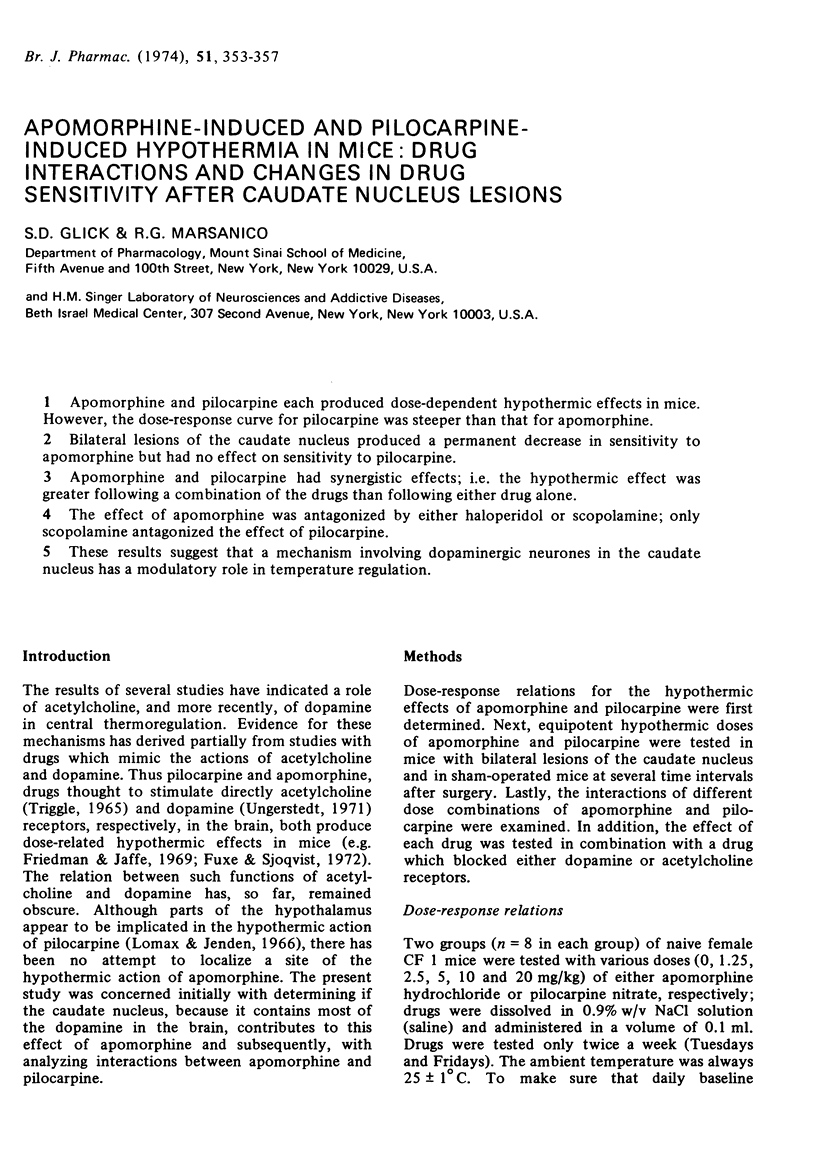
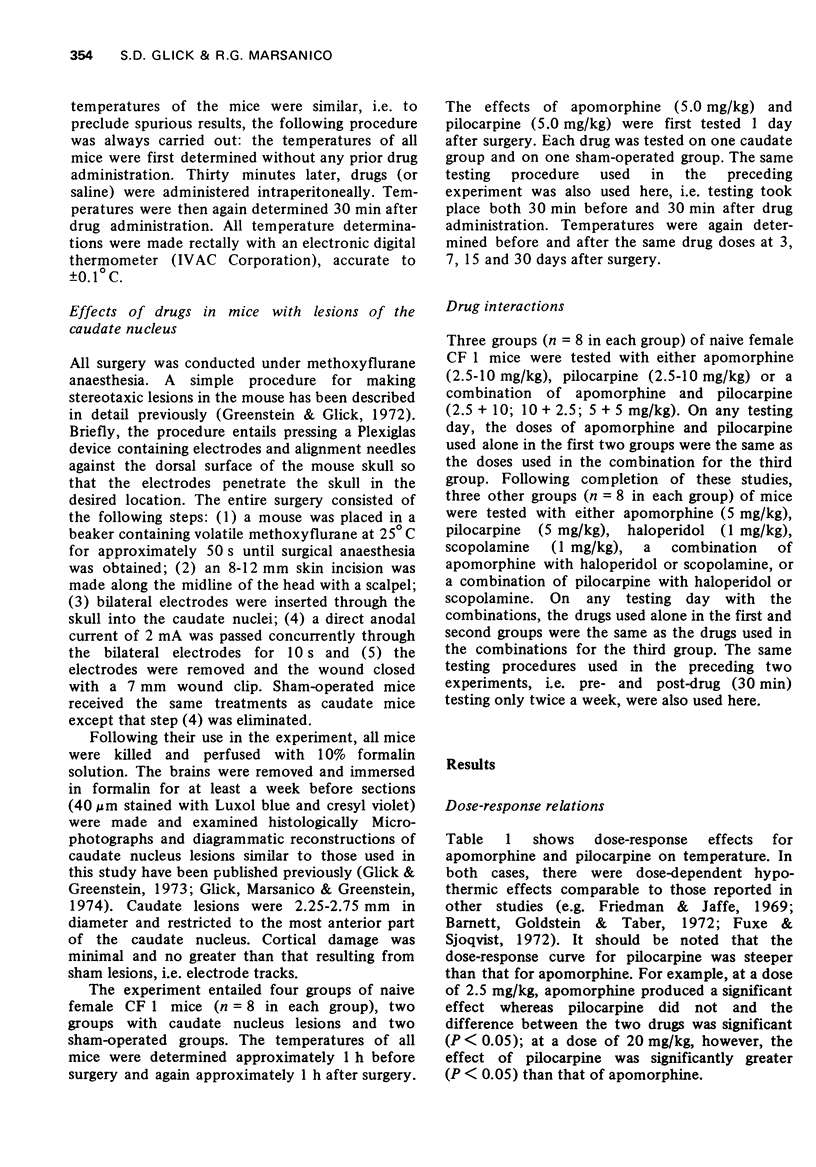
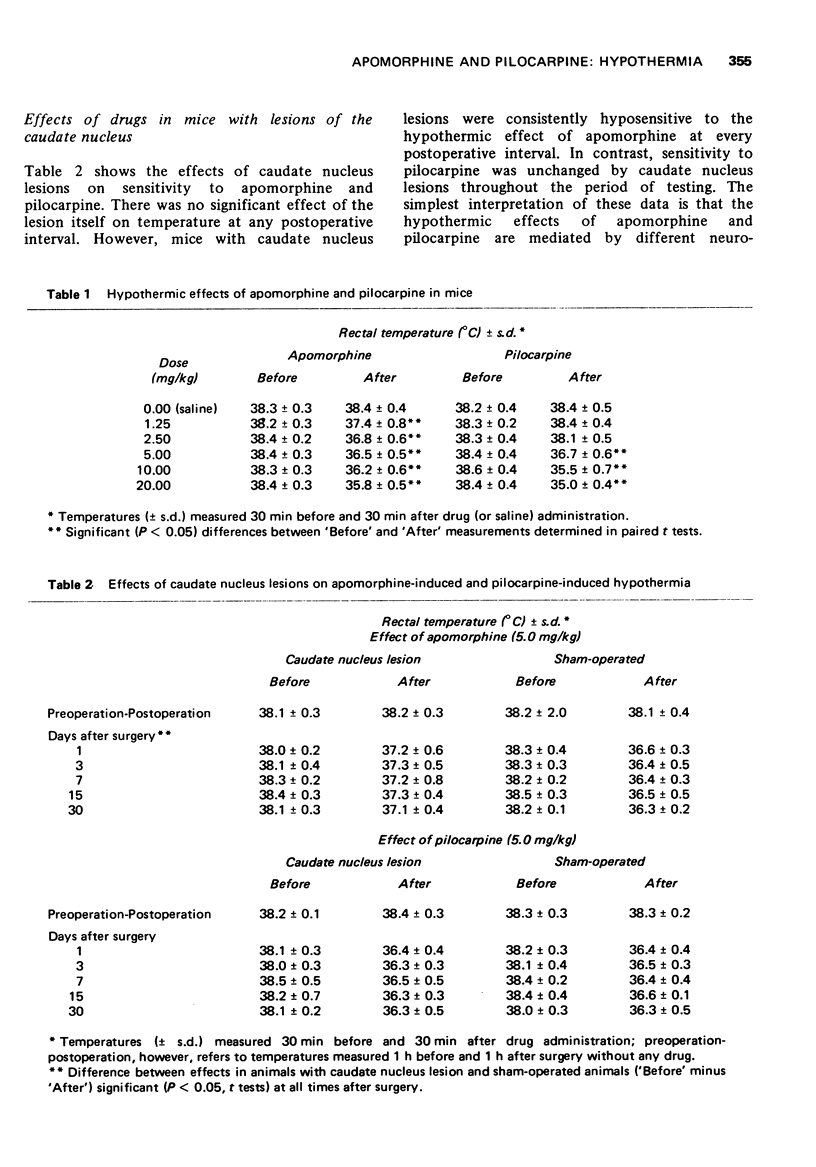
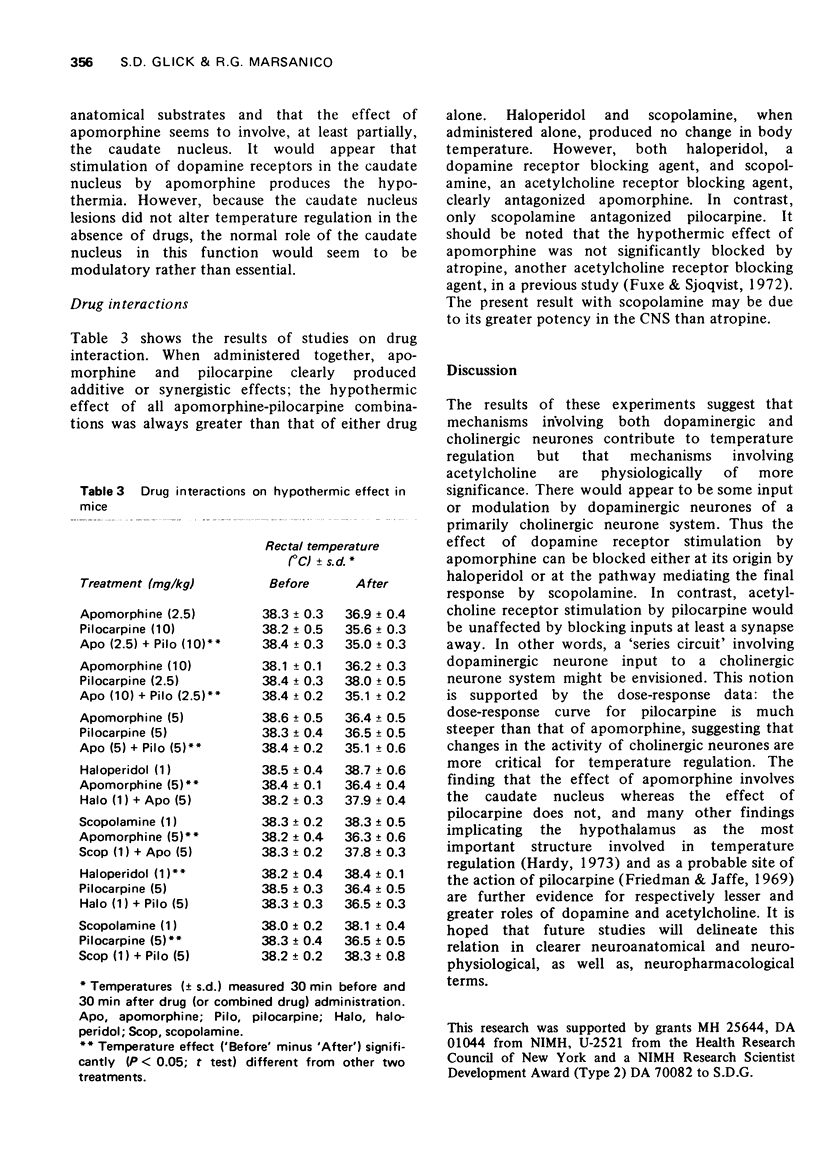
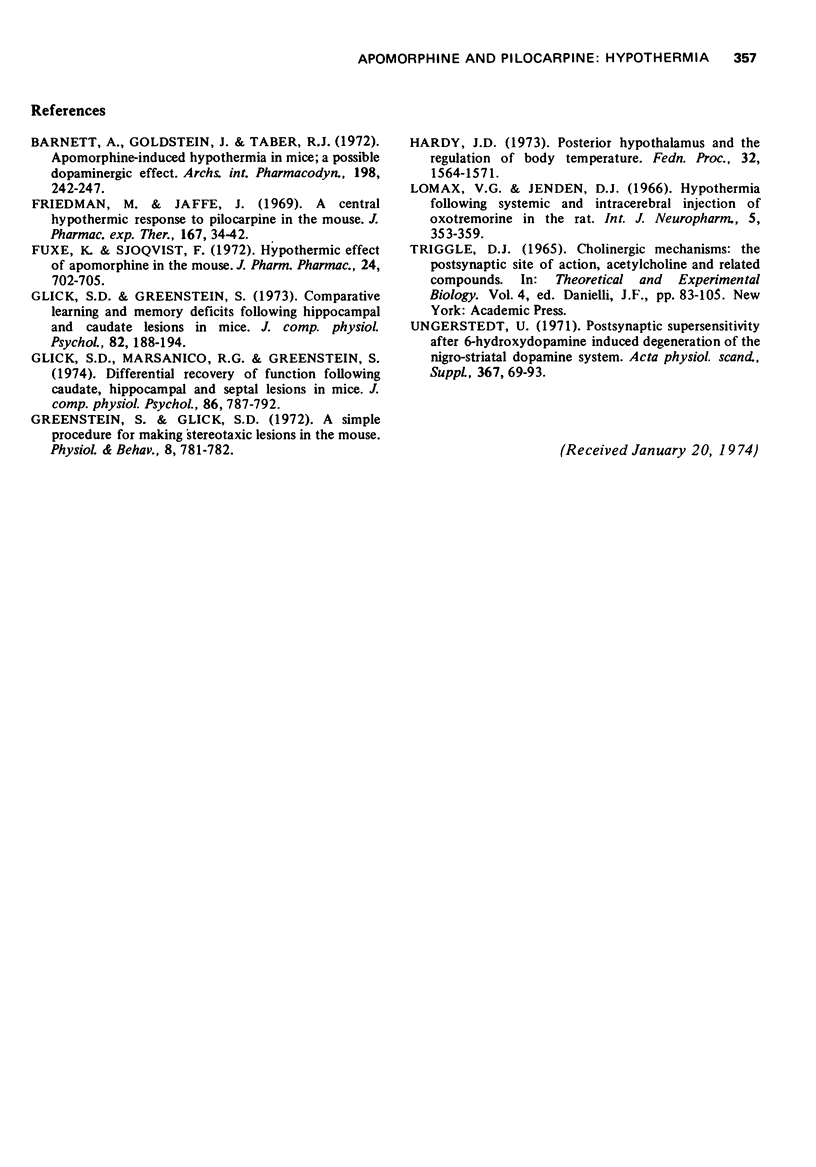
Selected References
These references are in PubMed. This may not be the complete list of references from this article.
- Barnett A., Goldstein J., Taber R. I. Apomorphine-induced hypothermia in mice; a possible dopaminergic effect. Arch Int Pharmacodyn Ther. 1972 Aug;198(2):242–247. [PubMed] [Google Scholar]
- Fuxe K., Sjöqvist F. Hypothermic effect of apomorphine in the mouse. J Pharm Pharmacol. 1972 Sep;24(9):702–705. doi: 10.1111/j.2042-7158.1972.tb09093.x. [DOI] [PubMed] [Google Scholar]
- Glick S. D., Greenstein S. Comparative learning and memory deficits following hippocampal and caudate lesions in mice. J Comp Physiol Psychol. 1973 Feb;82(2):188–194. doi: 10.1037/h0033916. [DOI] [PubMed] [Google Scholar]
- Glick S. D., Marsanico R. G., Greenstein S. Differential recovery of function following caudate, hippocampal, and septal lesions in mice. J Comp Physiol Psychol. 1974 May;86(5):787–792. doi: 10.1037/h0036393. [DOI] [PubMed] [Google Scholar]
- Greenstein S., Glick S. D. A simple procedure for making stereotaxic lesions in the mouse. Physiol Behav. 1972 Apr;8(4):781–782. doi: 10.1016/0031-9384(72)90114-x. [DOI] [PubMed] [Google Scholar]
- Hardy J. D. Posterior hypothalamus and the regulation of body temperature. Fed Proc. 1973 May;32(5):1564–1571. [PubMed] [Google Scholar]
- Lomax P., Jenden D. J. Hypothermia following systematic and intracerebral injection of oxotremorine in the rat. Int J Neuropharmacol. 1966 Sep;5(5):353–359. doi: 10.1016/0028-3908(66)90013-x. [DOI] [PubMed] [Google Scholar]
- Ungerstedt U. Postsynaptic supersensitivity after 6-hydroxy-dopamine induced degeneration of the nigro-striatal dopamine system. Acta Physiol Scand Suppl. 1971;367:69–93. doi: 10.1111/j.1365-201x.1971.tb11000.x. [DOI] [PubMed] [Google Scholar]


